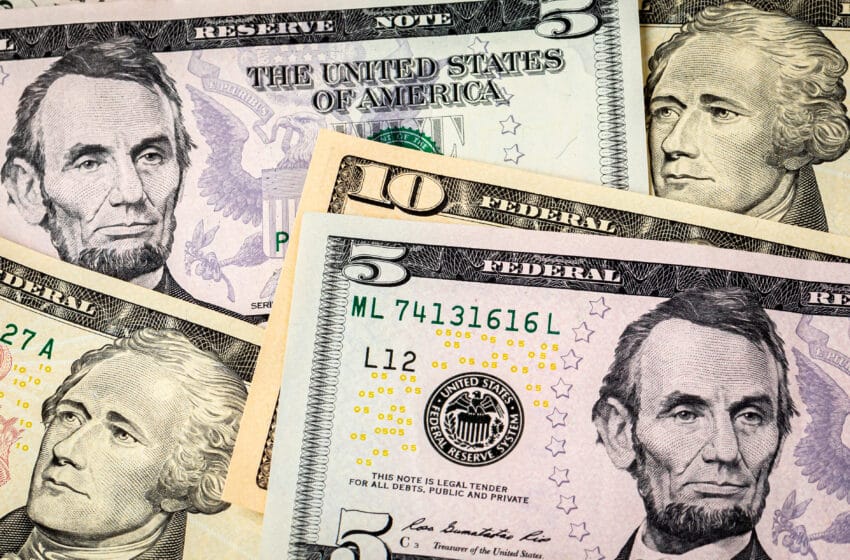The Federal Minimum Wage: What Are the Costs and Benefits?

We asked the experts for their perspective on this polarizing topic.
2021 has seen a resurgent discussion of the minimum wage across the United States. In January, lawmakers introduced the Raise the Wage Act of 2021. In March, an amendment to COVID-19 relief efforts that would have raised the federal minimum wage to $15 an hour failed—but only narrowly.
Since 2009, the minimum wage has remained fixed at $7.25. Some argue that more than doubling that rate, to $15, could lift millions out of poverty. But others, including many in the business community, warn that such a significant jump in the minimum wage would have detrimental effects, from weakened overall employment numbers to higher consumer prices.
For insight on this issue, we asked the experts what they thought. Paul J. Wolfson and Dale Belman looked at over 200 academic papers on the minimum wage for their book, What Does the Minimum Wage Do?, which won Princeton University’s William G. Bowen Award for the Outstanding Book on Labor and Public Policy. Meanwhile, Texas A&M’s Jonathan Meer contributed to minimum wage literature with a 2013 paper titled “Effects of the Minimum Wage on Employment Dynamics.” He has written on the topic for City Journal and other outlets.
Here’s what they had to say.
Paul J. Wolfson
Tuck School of Business at Dartmouth College
Dale Belman
School of Human Resources & Labor Relations at Michigan State University
After both an exhaustive survey of the research literature on the minimum wage and a formal meta-analysis of the employment results, the evidence suggests that moderate increases in the minimum wage are an effective way to raise wages in the lower part of the wage distribution. We also conclude that it has little or no effect on employment, measured as the number of jobs, the number of people working, or the number of hours. This is what one seeks in a policy tool: solid benefits with small costs.
There is strong evidence that the minimum wage boosts the earnings of the lowest-wage workers, and it may boost the earnings of those earning moderately higher hourly wages. In almost every wage study, the effect is more marked for women, who are more likely than men to be in low-wage positions. More than one study has reported lower rates of turnover in low wage jobs after minimum wage increases. This suggests following increases in the minimum wage, jobs become harder to find, costs associated with turnover decline and previously employed workers are sufficiently productive, at least afterward, that employers are not inclined to fire them. Decisive evidence that training or benefits decrease to offset the higher minimum wage does not exist.
Current research cannot address whether these results would hold for large increases in the minimum wage since none have occurred in over a generation. Our suspicion is that large increases could touch off the disemployment effects that are largely absent for moderate increases. Is an increase from $7.25 to $15, more than 100 percent and bigger than any since World War II, large? Certainly, but it is worth noting that the average minimum wage across states is $9.45; using this as the base, the increase is 59 percent, substantially less than 100 percent. This line of thought suggests that were disemployment effects to occur, they would likely vary considerably: largest in the South and parts of the Midwest and Mountain West, negligible to nonexistent on the West Coast and in the Northeast.
Increases in the minimum wage are not the only policy needed to address issues of low income in the United States. As many others have argued, programs such as the earned income tax credit and food stamps play a critical role in placing a floor under incomes and consumption, and minimum wage policy complements rather than substitutes for such programs. The minimum wage is a useful tool for policy and, as with most policy tools, must be used wisely and in coordination with other policies to achieve the desired end.
The minimum wage increases considered in our research have been moderate, so our conclusions must be premised on moderate increases. Under such conditions, there is little evidence of negative labor market effects. Moderate increases to the minimum wage can then, as originally intended, be used to improve the conditions of those working in the least remunerative sectors of the labor market. While not a standalone solution to the issues of low-wage work, it is a useful instrument of policy that has low social costs and clear benefits.
Paul J. Wolfson, PhD, a research fellow at The Tuck School of Business, Dartmouth College, has studied the minimum wage for more than 25 years. Since coauthoring What Does the Minimum Wage Do? (Upjohn Institute for Employment Research, 2014) with Dale Belman, they have published an examination of which demographic groups are most likely to be affected by the minimum wage, and a formal analysis of research on the employment consequences of the minimum wage.
Dale Belman, PhD, is a professor in the School of Human Resources & Labor Relations at Michigan State University. His research focuses on the effects of unions and of labor market regulation and the construction industry. His book with Paul Wolfson,What Does the Minimum Wage Do?, reviews the prior fifteen years of research on the effect of the minimum wage on employment, hours, earnings, and other outcomes.
Jonathan Meer
Department of Economics at Texas A&M University
While a popular policy, the minimum wage often gives business leaders concern regarding potential effects on the labor market. The focus is usually on the number of jobs that might be eliminated through higher mandated wages, and there is far from a consensus in the contentious economics literature on the subject. But those who actually have to think about hiring, compensation, and benefits know that there’s much more to a job than just its wage compensation.
Counting up the number of people who are employed and their wage rates is much easier than examining other margins of adjustment that may crop up in response to higher minimum wages. But work hours, job satisfaction, non-wage benefits, and flexibility, among many others, are crucial for understanding the full impact of this policy. Employers are likely to adjust these other aspects before they change the way they do business. It’s costly to do so—a restaurant can’t switch to counter service overnight, for example—and higher labor costs inevitably push businesses to find ways to absorb and reduce them.
Moreover, proposals to raise the minimum wage to $15 an hour and eliminate the tip credit for restaurant workers are far outside of the American experience. Currently, the minimum wage affects only a small proportion of the labor force. But according to the Bureau of Labor Statistics, about 40 percent of all workers in Texas earn $15 an hour or less. To some, this gargantuan bite on the labor force means the overall effects are uncertain. But the uncertainty doesn’t lie in whether the effects on employment will be positive or negative—the question is just how negative the effects will be. Once employers run out of those other levers to absorb labor costs, often making workers worse off in ways that aren’t generally visible to researchers, they will either lay off workers or find themselves unable to stay in business.
The minimum wage is also a strange policy from a philosophical perspective. There is no doubt that many people are struggling to get by. Enhancing economic mobility and alleviating poverty are rarely controversial. But why is it the responsibility of employers to ensure the overall well-being of their employees’ families? It flies in the face of notions of equal pay for equal work: Should a single mother be paid more than a married one, since she likely has greater need? Should raises be tied to changes in life circumstances rather than value to the organization? Ensuring a basic standard of living should be a shared societal responsibility, not an additional cost foisted on the employer who is already relieving poverty through a job offer—leaving aside that this cost makes the job offer less likely.
Coupled with the inevitable negative impacts of the minimum wage for at least some workers—most likely those who are already marginalized—it’s clear that the minimum wage is the wrong tool for an important job. It makes for an easy slogan, but it’s not a real solution.
Jonathan Meer is the Mary Julia and George R. Jordan Professor of Public Policy at Texas A&M University. He did his undergraduate work at Princeton University and earned his PhD from Stanford University. His research focuses on altruism, the economics of education, and the minimum wage. He teaches an online principles of microeconomics course that reaches over 2,500 students per year.





One for the Money, $16 Billion for...
July 6, 2021